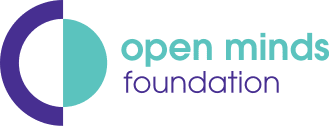Critical Thinking: Preventing Coercion
Or A Beginners Guide to Critical Thinking Critical thinking is +Question everything +How to prevent Coercion by using critical skills
The most effective way to protect oneself from coercion and coercive control is to learn how and to use critical thinking skills. The best time to initiate the learning process is at seven years of age. However, for most of us that kind of opportunity evaporated years ago. But it is never too late to begin the learning process.
To start the process, please note the following insightful reflections about critical thinking. We hope this paper will kindle your interest to become a critical thinker:
Critical thinking...
…is not just fault-finding
…is not just rejecting
…is not just destructive
but it may involve all of these along the way
Critical thinking...
…raises the questions we all need to ask
…seeks the answers we need to find
Critical thinking...
…is analytical thinking
…is fact-finding
…is looking for evidence
…is constructive
and it is at the heart of all discovery and the root of trustworthy leadership
Critical thinking...
…exposes untrustworthy and fake leaders
…builds confidence in what is reliable
Critical thinking...
is the objective analysis and evaluation of an issue in order to form a judgment.
Critical thinking...
…protects against coercion
…weakens the power of manipulative cults
…helps stop the spread of misinformation
…loosens the grip of conspiracy theories
Critical thinking
is “thinking about thinking”.
It is a way of deciding if a claim is true, false, or sometimes true and sometimes false, or partly true and partly false.
Critical thinking
is the intellectually disciplined process of actively and skillfully conceptualizing, applying, analyzing, synthesizing, and/or evaluating information gathered from, or generated by, observation, experience, reflection, reasoning, or communication, as a guide to belief and action.
Critical thinkers continually question everything.
Why is critical thinking important?
- Critical thinkers are able to recognize and resist coercion/coercive control
- Critical thinking is key to success in ones career
- Critical thinking can help a person make better decisions and be happier
- Critical thinking will ensure that one’s opinions are well informed
- Critical thinking improves relationships and makes people better citizens
Where can you use critical thinking?
The best place to use critical thinking skills is in ones everyday life: When we buy something; when someone tells us something they claim is a fact; to wisely assess what we hear in the news and social media; we can save money by avoiding scams.
Who uses critical thinking?
We can all use critical thinking, and once we know how to do it, we will wonder how we could have lived our life without it.
How old must you be to start learning critical thinking skills?
Most young people can start learning when they are seven years old; some as young as four. It starts by asking a child student, “How do you know that?” again and again. Once the significance of that question sinks in, it’s all about age appropriate content and developing the same theme over the years so it builds up a core skill set for them as adults.
Miscellaneous observations about critical thinking
– Independent thinking is the desire of a person to convince oneself that the information being presented is true or reasonable. This differs from “critical thinking”, which is the process used to collect and process information to arrive at a logical conclusion.
– Critical thinking is part of a lifelong learning process and collaboration fosters its development thru discussion, clarification of ideas, and evaluation of others’ ideas.
– Critical thinking can be split into two important areas: logical fallacies and cognitive bias.
- A cognitive bias occurs when someone ignores evidence that contradicts the beliefs they are comfortable with, and seeks to interpret evidence exclusively in favor of those preferred beliefs.
- A fallacy is a misleading argument that might sound true and may even be based on truth, but is in fact false.
To get you started on your journey to become a critical thinker, please note the following websites, videos and articles:
– https://www.facebook.com/BigThinkdotcom/videos/3248212751867821 An excellent video about critical thinking.
– https://www.bbc.co.uk/ideas/videos/five-simple-ways-to-sharpen-your-critical-thinking/p0929tns This video is about ways to improve one’s critical thinking.
– https://reboot-foundation.org/ The Reboot Foundation is dedicated to supporting efforts by individuals and organizations to better integrate critical thinking into our daily lives. The Foundation conducts surveys and opinion polls, leads its own research, and supports the work of university-affiliated scholars in a shared goal to help improve critical thinking.
The Reboot Foundation also develops practical tools for parents, teachers, employers, and others interested in cultivating a capacity for critical thinking. Part of the Reboot Foundation’s approach is our SHARP thinking method, which aims to combat fake news and to help improve critical thinking in this age of misinformation. By thinking logically and critically, people can better understand and digest information — and determine whether that information is viable.
– Snopes (Snopes.com), formerly known as the Urban Legends Reference Pages, is a fact-checking website. Snopes is a “well-regarded reference for sorting out myths and rumors” on the Internet. It has also been seen as a source for validating and debunking urban legends and similar stories in American popular culture.
– https://www.forbes.com/sites/helenleebouygues/2019/07/08/how-one-school-is-using-critical-thinking-to-ensure-its-students-long-term-success/?sh=77dfabfa5094 This is a fascinating article about a school in Washington, D.C. that is teaching critical thinking skills to Pre Kindergarten to 8th Grade students.
– https://www.watershed-ed.org/aboutus Helping people develop and use visual thinking strategies (VTS) to improve one’s thinking skills. Their mission is to make VTS possible in any classroom in the US and abroad. To do so, they offer a highly-accessible and affordable portfolio of products and services designed for professional learning and instruction in 21st century classrooms.
– https://www.criticalthinking.org/ The Center for Critical Thinking and Moral Critique and the Foundation for Critical Thinking — two sister educational non-profit organizations — work closely together to promote educational reform. They seek to promote essential change in education and society through the cultivation of fair-minded critical thinking. Critical thinking is essential if we are to get to the root of our problems and develop reasonable solutions.
– https://www.verywellmind.com/about-us Verywell Mind is a trusted and compassionate online resource that provides the guidance you need to improve your mental health and find balance. Their library of more than 4,000 pieces of content, created and refined over the past 20+ years, has been written by more than 100 healthcare professionals and industry experts including experienced doctors, therapists, and social workers, and then vetted by board-certified physicians. We give you the resources you need to feel happy and healthy. The Verywell family of brands, including Verywell Health, Verywell Fit, Verywell Family, and Verywell Mind, is a top 5 health publisher, and helps more than 30 million people each month.
– https://www.schoolofthought.org/ It provides baloney protection and more. The School of Thought is a nonprofit and provides free education resources on critical thinking, creative thinking, and philosophy.
– https://www.criticalthinking.org/pages/center-for-critical-thinking/401 This is one article on the Foundation for Critical Thinking’s (see above) website. It’s a good summary of critical thinking.
– https://www.youtube.com/watch?v=-eEBuqwY-nE This is a good YouTube explanation of critical thinking and how to use it.
More on Propoganda
 by Jon Atack
by Jon Atack
Propaganda has come to mean the negative use of public relations. It covers deceptive advertising, political spin and fake news.
In the 1930s, the US Institute of Propaganda Analysis came up with a useful description of the methods used in the invidious art of propaganda. Here is our reworking of those methods:
Name-calling – using personal insults and slogans to attack an enemy or an unwelcome opinion, rather discussing the facts or answering criticism.
Glittering generalities – describing one’s own party, system, candidate or opinion in broad, glowing terms, keeping away from specific issues and instead using emotional appeal to align the cause with the highest possible ideals. This approach is typical of political speech-making.
Transfer – the propagandist aligns the target with a previously unrelated person or idea, using negative associations to malign and positive associations to boost credibility. This is similar to the advertising technique called “positioning”.
Testimonials – personal accounts of satisfaction from others, which may or may not be scripted or even faked to create the illusion that millions of others support the candidate, viewpoint, or cause. Marketeers and cult groups commonly use testimonials as if they were evidence. Science rejects such testimonials as anecdotal evidence.
Plain Folks – presenting the desired opinion as coming from “just plain folks,” that is, someone the audience can respond to and identify with.
Bandwagon – “Everyone else is on board, what about you?” It gives the false impression that the idea being sold is universally accepted. It is an aspect of Cialdini’s law of consensus, as is the testimonial.
Fear – similar to the phobia induction in a high-control group: the propagandist uses the fear of dire consequences, often exaggerated, to move whole populations into a compliant, fervent state of paranoia.
The Institute for Propaganda Analysis also published the “ABCs of Propaganda,” a six-point checklist designed to help us asses the value of any message, whether from a government or political party, a religious group, a corporation, or a news organization:
- Ascertain the conflict element in the propaganda.
- Behold your own reaction.
- Concern yourself with today’spropaganda associated with today’s conflicts.
- Doubt that your opinions are “your very own”.
- Evaluate, with the greatest care your own propaganda.
- Find the facts before you come to any conclusion.
This is a useful way to evaluate information to see if it is fake news.



